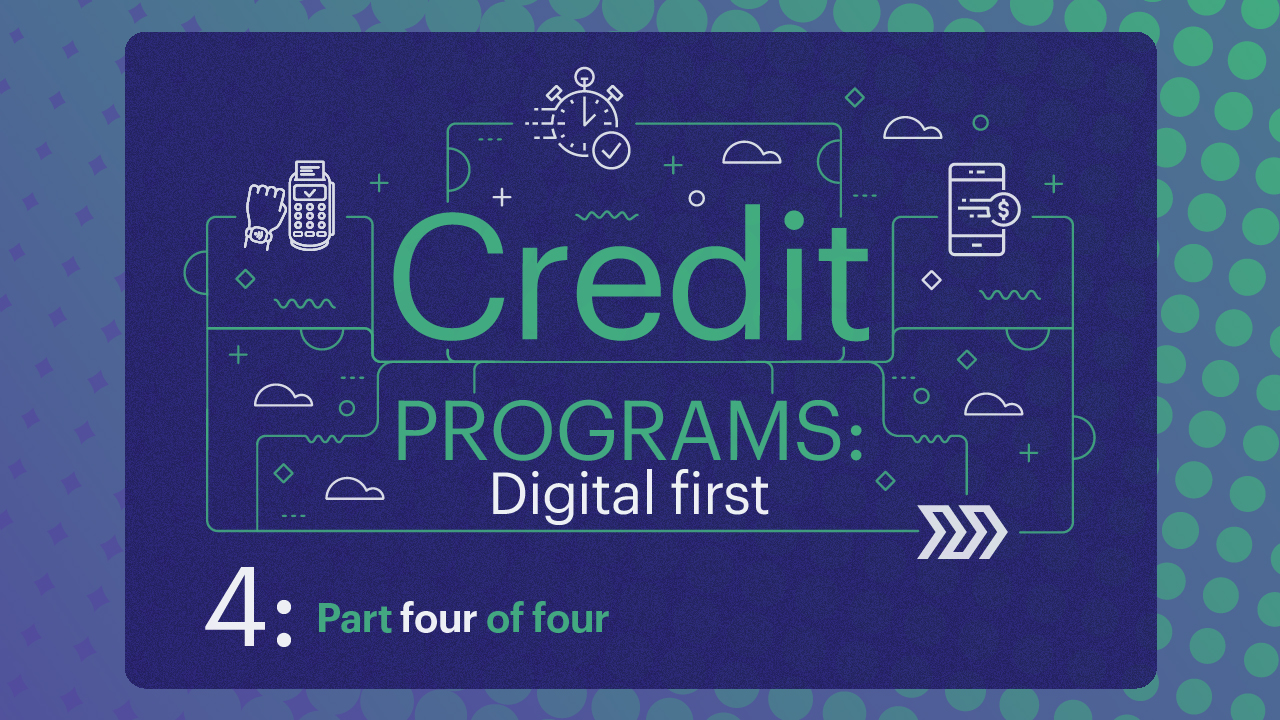April 19, 2022 | 5 min read
Creating the right digital first credit card experience



Article 1: Why credit still matters; Article 2: Designing credit card rewards; Article 3: Driving credit card revenue
In 2021, the Apple App store and the Google Play store hosted more than 5.5 million apps in total. App usage is slated to increase further in the coming years unlocking new opportunities for builders and retailers. Once the traditional domain of big banks, the pandemic has markedly shifted financial service organizations to mobile apps as evidenced by the steep growth of Robinhood, Cash App and PayPal. According to Google research, 73% of smartphone users now prefer to manage their finances, including their credit cards, on a mobile app*. However, many present credit cards are far from modern. They are frequently powered by legacy tech stacks built in the 20th century and often come with clunky mobile experiences. These legacy systems may not enable fintechs and retailers to build an embedded card experience within their own apps and unlock the value of customer engagement.
Marqeta’s modern card issuing is helping retailers and fintechs to quickly launch their own credit card programs. Marqeta’s goal is to empower businesses to conceive co-branded credit cards that can be fully embedded within a brand’s mobile experience and bring them to market in record time. This can empower businesses to attract new customers and build loyalty. With a truly embedded card experience, consumers can pay securely through virtual cards, get rich analytics on their spend, manage their payments and statements – and they can do all of this within the native app of the brand. Marqeta believes it is poised to disrupt this space by reimagining credit card issuing from scratch.
Truly Embedded Experiences
Back in 2019, Angela Strange, a General Partner at Andreessen Horowitz, predicted that every company will be a FinTech company. We’ve seen this trend increasingly play out the past couple of years as brands began integrating financial services by directly embedding financial experiences into their mobile apps. The reasoning is simple: embedded finance helps brands distribute financial services outside of their core offering, but more importantly, it helps drive customer engagement which ultimately can profitability. The innovation and growth in this area may be here to stay and continue to expand, as a study from Juniper Research has estimated the value of embedded finance to exceed $138 billion in 2026.
We believe the next wave of growth in embedded finance will be seen in credit. Today, your typical credit card experience often lives completely outside of the brand experience on a legacy issuer’s platform. Think of one of the co-branded retail credit cards you may own. You might shop directly within the retailer’s mobile app, but when it comes time to make a payment for your credit card or view your transaction details of the purchase you just made, you typically have to leave the app only to log into a separate banking app to perform these actions. This seems a bit antiquated; technology today has already shifted users to conduct financial transactions inside of non banking apps – look at Klarna, Uber, or Instacart. That same shift can be applied to any co-branded credit card.
By embedding these experiences, brands can deepen and build their relationship with their cardholders by providing the services their users need, at the point in which they need them. This context is crucial. When brands engage their cardholders in the right context, magic can happen. This allows brands to truly delight their customers and create a much more engaging experience as part of the customer journey. This is just the beginning; the opportunities are endless.
Speed to Market
In the past decade, millions of personal records have been compromised in data breaches across the financial service sector alone. With our growing reliance on digital services like streaming and e-commerce in the post-pandemic world, the need to process large payments securely and quickly has never been greater. With Marqeta’s modern card issuing platform, companies and cardholders will have the power to create secure virtual cards to enrich the embedded card experience and safeguard against potential breaches. These virtual cards enable instant card issuing and spending, which means the cardholders don’t have to wait for plastic cards to arrive before they can start spending.
These virtual cards may prove to be powerful and secure since they are configured to have random personal account number (PANs) and custom expiry periods.. When configured for one-time use for a specific transaction or a merchant, the virtual cards can provide another layer of protection to help recognize and block unauthorized transitions.
Marqeta’s modern card sharing will power instant generation of virtual cards which will allow a cardholder to start spending immediately. They can also configure controls like card expiry, credit limit, transaction limit, and allowing transactions from specific merchants. Albeit virtually, these cards can be temporarily and instantly shared with family and friends (as gift cards), used for one-time transactions like signing up for free trials or to transact on websites whose security might be lax or unknown. So instead of driving to the store to purchase a gift card in person, a gift card could be created and sent from the comfort of home. Overall, modern virtual cards can enable peace of mind for cardholders, their families and friends, to seamlessly shop online or in-store using virtual cards, which could decrease the chances of their personal data being compromised.
Spending Visualization and Categorization
Many consumers today want more than a credit card, they want a credit coach. 51% of Millennials say they struggle to track their expenses each month according to a survey conducted by Marqeta. According to a 2021 study from Bread by Alliance Data, 78% of Gen Z consumers are afraid of debt but the results also show that a majority of Gen Z consumers are gravitating towards credit cards as they mature. Digital first brands have the opportunity to solve this problem in two ways: 1) utilizing the rich transaction data 2) leveraging open APIs to control and manage user spending.
Digital first brands have rich transaction data that can be used to visually display clear and easy to read information directly in their app. By harnessing this data through platforms and tools like webhooks, brands can display transaction details, merchant logos and images, spend category, location information, and more. Brands can even provide a user with their historical spend at specific merchants on a weekly, monthly, and yearly basis. This enables Millennial and Gen Z cardholders to see just how many times they bought coffee at Starbucks or ate avocado toast at their favorite brunch spot this past month. Drilling down to this level of transaction detail can be a powerful way for cardholders to track their expenses each month.
In addition to transaction details, brands can surface transactions broken down by category, further highlighting spending habits, which can help cardholders budget and track expenses that are important. This is what Personal Financial Management 2.0 is all about. By providing key financial information all in one place, brands can empower their customers by visually displaying how they are trending against their budget, enabling their customers to be in better control of their spending and helping them to improve their financial health along the way.
How modern credit card issuing can help you
Marqeta’s credit platform was built from the ground up, and enables brands with the freedom to design the customer journey with modern, cloud based APIs. With Marqeta’s credit platform and integrated partners, brands can create a truly embedded credit card experience that fits seamlessly into their mobile app which will allow them to better serve, engage, and ultimately drive more margin. These powerful capabilities can truly transform every company into a fintech company in the 21st century. Learn more about building a scalable credit card rewards offering with a guide to building a modern credit card, or talk to a credit expert on ways a credit card program can help you build loyalty with your customers.
*The Fintech Effect | Consumer impact and the future of finance, Plaid
